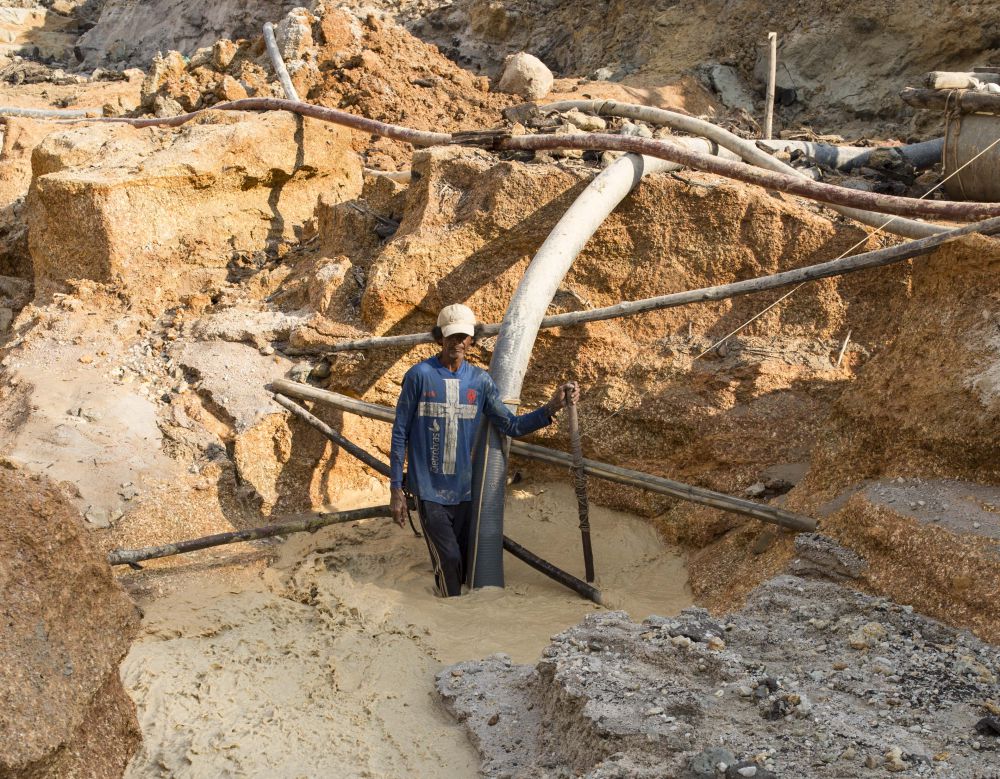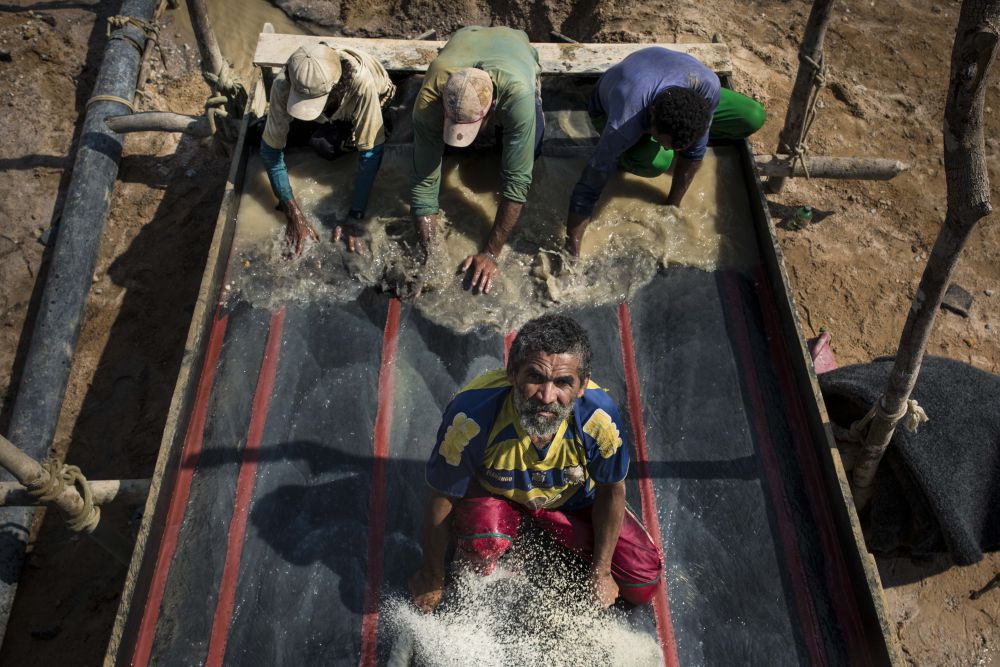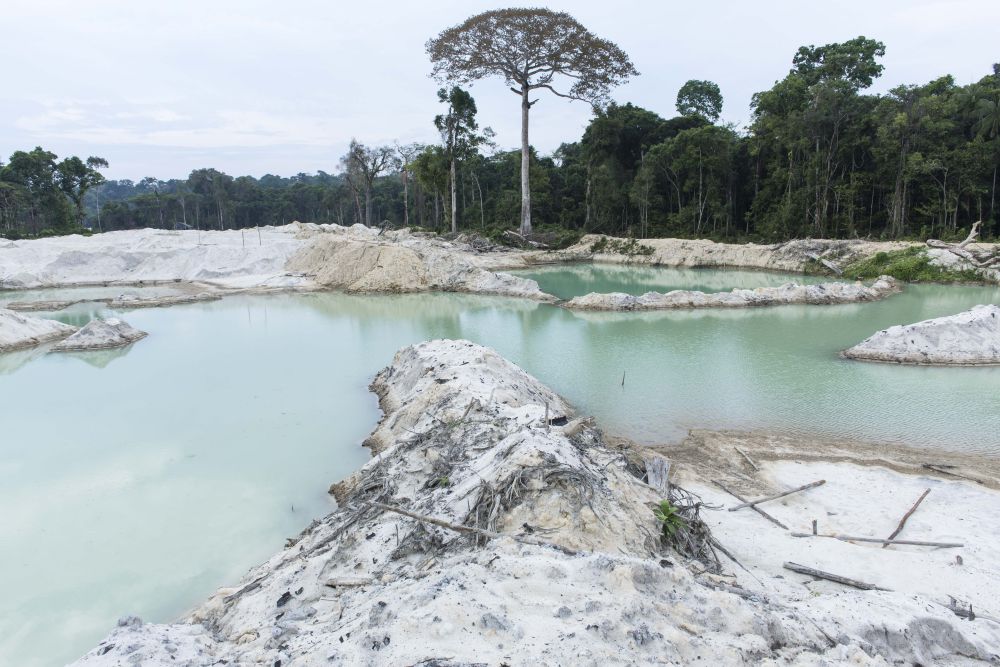Gold Fever in the Forest

In a deep, ugly hole in the ground, a man nicknamed “Slim” stands knee-deep in swirling water the color of cappuccino. He’s at the bottom of an illegal gold mine in Amazonian Brazil, and at his right foot is a vacuum pump slowly removing water used to blast away loose soil.
That scene, repeated every day, is captured in a photo accompanying a photo essay co-authored by Jeffrey Hoelle, an assistant professor of anthropology at UC Santa Barbara, in the online magazine Sapiens. Illegal open-pit gold mining has created an environmental disaster in the Amazon. Nearly 1,700 square kilometers of rainforest disappeared between 2000 and 2013. Cyanide and mercury, used to extract and process gold, poison the landscape, wildlife and people.
But the authors wanted to do more than simply witness destruction. As an anthropologist, Hoelle was interested in the people who left their towns and families to toil in the open-pit gold mines known in Brazil as garimpos.
“I wanted to see where the gold came from,” Hoelle said. “How do these guys mine gold in the middle of the forest, especially with the government cracking down on them? Why did they come? What was it like in the camps?"
The research of the garimpos was part of a unique collaboration supported by a grant from the National Geographic Society. Peter Richards, an economist, now at the U.S. Agency for International Development, and Michael Klingler, a geographer and photographer from the University of Innsbruck in Austria, invited Hoelle for his expertise in the Amazon. The author of “Rainforest Cowboys: The Rise of Ranching and Cattle Culture in Western Amazonia” (University of Texas Press, 2015), Hoelle has spent considerable time among people scratching out a living in the dense wilds of Brazil.
“Even though I do research with a somewhat rough and tumble segment of the population,” Hoelle explained, “the gold mines are especially notorious in Brazil as seedy, violent places. I would never have gone to the mines if they [the co-authors] had not invited me. They showed me some of the incredible photos and information that they already collected, and asked me to help tell the human story.
“This Sapiens article is our first attempt at communicating a more complex rendering of life in the gold mines of the Amazon,” he added.
What Hoelle and the others found was a world that defied easy labels, where morality and the law collided with the realities of a global market for a commodity that’s been an object of lust for centuries, he noted. The miners, or garimpeiros, are indeed destroying vast swaths of the rainforest with their illegal mines. But they’re also poor people, nearly all men, trying to dig a better life out of the ground.
“I don’t think these guys are villains or heroes,” Hoelle said. “I think they are part of the global economic system. They’re providing something that everyone, with very few exceptions, wants in some way. The miners get dirty producing this metal that makes people in faraway places shine and sparkle.”
One surprising discovery amid the destruction was the orderliness of the mining camps, Hoelle said. Although the towns where the garimpeiros went to sell their gold and celebrate could be rough and dangerous, the camps were relatively serene.
“It has to be calm and orderly in the camps because you’re working with gold —something that has value from the moment you find it,” he explained. “If you’re worried that someone is going to steal it or pocket a little bit of it, then it’s not going to work. You have to work in a team, and strong codes of conduct have developed in the mines over the years.
Sapiens, where “The Gold Camps of the Brazilian Amazon” was published, is designed to make anthropology accessible to the general public, Hoelle said.






